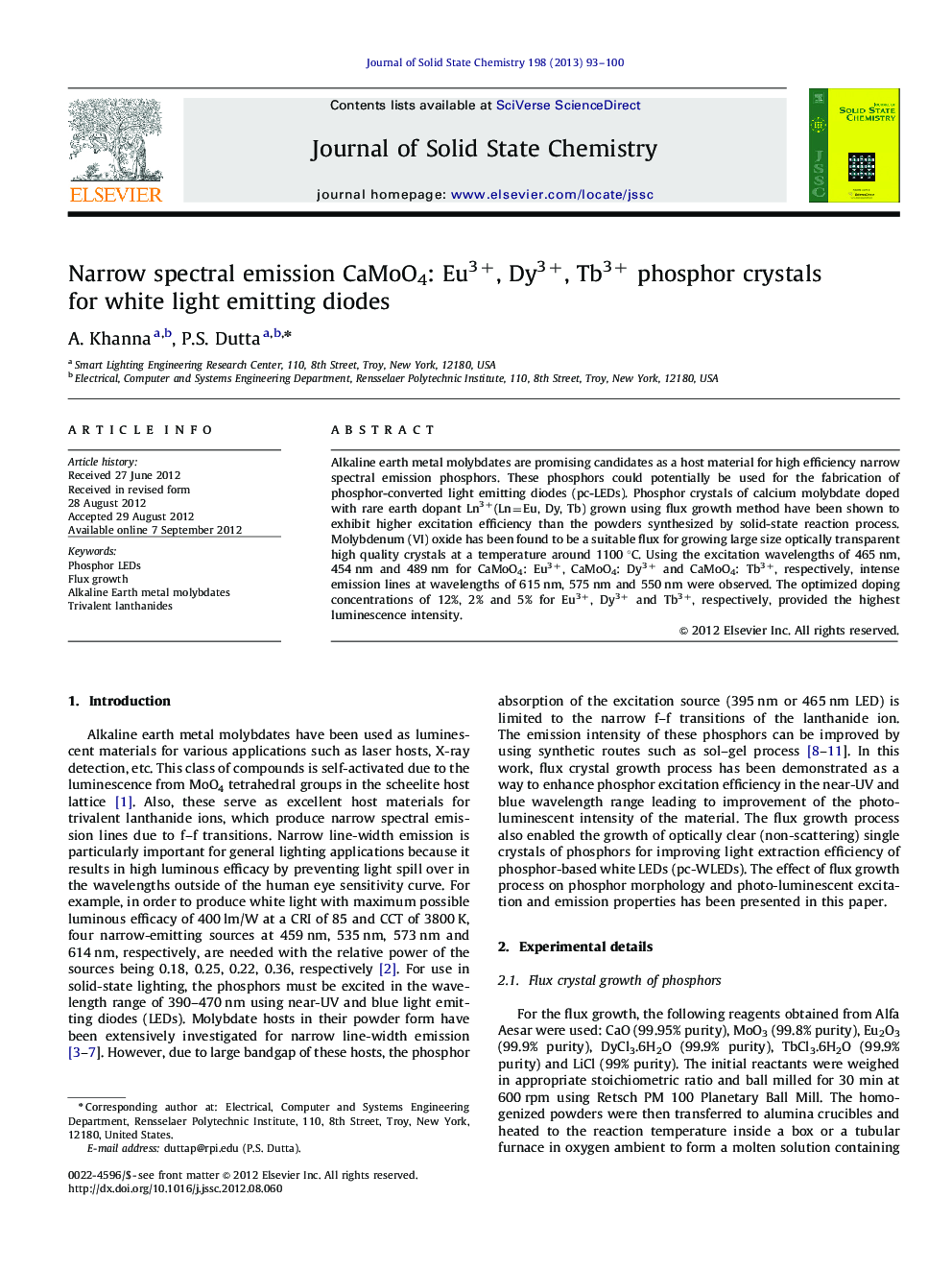| Article ID | Journal | Published Year | Pages | File Type |
|---|---|---|---|---|
| 1331367 | Journal of Solid State Chemistry | 2013 | 8 Pages |
Alkaline earth metal molybdates are promising candidates as a host material for high efficiency narrow spectral emission phosphors. These phosphors could potentially be used for the fabrication of phosphor-converted light emitting diodes (pc-LEDs). Phosphor crystals of calcium molybdate doped with rare earth dopant Ln3+(Ln=Eu, Dy, Tb) grown using flux growth method have been shown to exhibit higher excitation efficiency than the powders synthesized by solid-state reaction process. Molybdenum (VI) oxide has been found to be a suitable flux for growing large size optically transparent high quality crystals at a temperature around 1100 °C. Using the excitation wavelengths of 465 nm, 454 nm and 489 nm for CaMoO4: Eu3+, CaMoO4: Dy3+ and CaMoO4: Tb3+, respectively, intense emission lines at wavelengths of 615 nm, 575 nm and 550 nm were observed. The optimized doping concentrations of 12%, 2% and 5% for Eu3+, Dy3+ and Tb3+, respectively, provided the highest luminescence intensity.
Graphical AbstractCaMoO4: Eu3+ phosphor crystals grown using a molybdenum (VI) oxide flux exhibited around 1.5 times the emission intensity of powders obtained from solid-state reaction at the same synthesis temperature. These crystals were found to efficiently emit 615 nm red light when excited by near UV light up to a wavelength of 395 nm.Figure optionsDownload full-size imageDownload as PowerPoint slideHighlights► CaMoO4: Ln3+ (Ln=Eu3+, Dy3+, Tb3+) phosphor crystals were successfully grown using high temperature flux (solutions) containing molybdenum (VI) oxide or lithium chloride. ► Narrow spectral emission at 615 nm, 575 nm and 550 nm, respectively, was observed from CaMoO4: Ln3+ (Ln=Eu3+, Dy3+, Tb3+) phosphor crystals. ► The optimized doping concentrations of Eu3+, Dy3+, Tb3+ in CaMoO4 for highest emission intensity were determined to be 12%, 2% and 5%, respectively. ► The CaMoO4: Ln3+ (Ln=Eu3+, Dy3+, Tb3+) phosphor crystals grown with molybdenum (VI) oxide flux exhibited 50% higher emission intensity compared to the crystals grown with lithium chloride flux and the powders synthesized by solid-state reaction.
